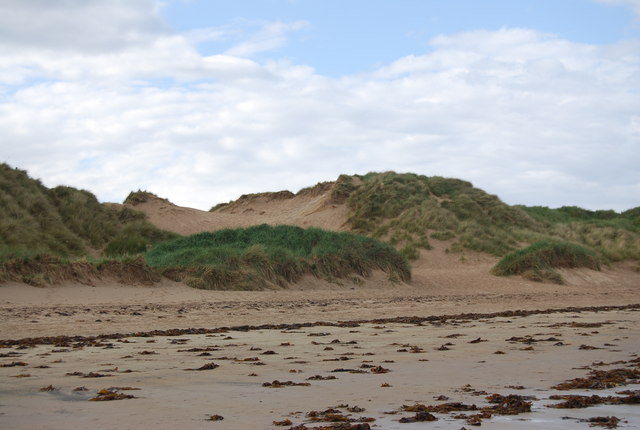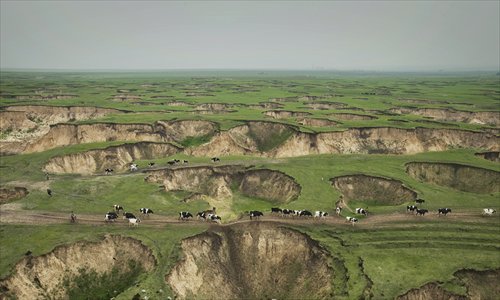The protected areas of the Hulunbuir grassland are well
preserved, but unprotected areas are degrading from human activities. The deterioration of the grassland is due
partly to the migration of farmers from the Central Plain of China. The Central
Plain farmers were accustomed to ample rainfall and fertile lands. Even after
migrating to the grassland, they used the same farming system as they did in
Central China. Their method of deep plowing degraded the surface of the soil,
which is vital in protecting the bottom layers of loose soil (Zhang, Borjigin, and Zhang 20). The combination
of a damaged topsoil layer and strong winds in that area resulted in wind
erosion of the land and dust storms. As a result of land degradation, blowout
dunes have formed and have become more prominent (21). Local herders also
contributed to the deterioration of the grassland. They used it as
a grazing zone for their livestock, but their animals have advanced the damage
to the topsoil and have further contributed to erosion of land (23).
 |
| http://s0.geograph.org.uk/geophotos/02/51/50/2515041_40e6834d.jpg |
Coal mining has also had a serious impact on the quality of
the grassland. As miners searched for coal in the grassland, they left enormous
pits that have only added to the amount of degraded land. By the early 21st
century, 39,833 km of grassland was affected by desertification. Currently, at
least 73.5% of the Hulunbuir grassland is degraded and are continuing to
deteriorate at 2% every year (Shuang, 2012).
 |
| http://www.globaltimes.cn/Portals/0/attachment/2011/f86af4e7-bd9b-45c1-8ae1-393e74d7025b.jpeg |
In 1950, desertification of the Mongolian Plateau was
measured to be only 0.18% , but increased to 18.48% in 2000. At this rate, the
grassland will become a desert-like area in 40 or 50 years (Squires et al. 94).
 |
| http://books.google.com/books?id=2fu6jVgfh-UC&printsec=frontcover#v=onepage&q&f=false |
 |
| http://books.google.com/books?id=2fu6jVgfh-UC&printsec=frontcover#v=onepage&q&f=false |
Because of land degradation, the amount of available
resources in Inner Mongolia was reduced and plant species in the area decreased
from 130 to 30 in the early 21st century (Squires et al. 93).
 |
| http://books.google.com/books?id=2fu6jVgfh-UC&printsec=frontcover#v=onepage&q&f=false |
Works Cited
Shuang, Yan. "Inner Mongolia Sinking Under the Weight of Its Mining Industry." Globaltimes.cn. N.p., 20 Sept. 2012. Web. 29 Nov. 2012. <http://www.globaltimes.cn/content/734241.shtml, 2012>.
Squires, Victor R., Xinshi Lu, Qi Lu, Tao Wang, and Youlin Yang. Rangeland Degradation and Recovery in China's Pastoral Lands. Wallingford, UK: CABI, 2009. Web. <http://books.google.com/books?id=2fu6jVgfh-UC&printsec=frontcover#v=onepage&q=18.48%25&f=false>.
Zhang, MunkhDalai A., Elles Borjigin, and Huiping Zhang. "Mongolian Nomadic Culture and Ecological Culture: On the Ecological Reconstruction in the Agropastoral Mosaic Zone in Northern China." Ecological Economics 62.1 (2007): 19-26. Print.
No comments:
Post a Comment